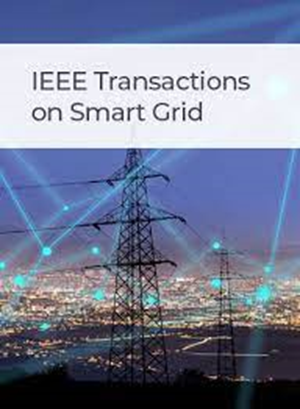Self-Supervised Latent Feature-Guided Multi-Step Diffusion Model for Electricity Theft Detection With Imbalanced and Missing Data
IF 8.6
1区 工程技术
Q1 ENGINEERING, ELECTRICAL & ELECTRONIC
引用次数: 0
Abstract
The widespread adoption of advanced metering infrastructure has provided abundant data, enabling the integration of deep learning techniques into smart grids. However, it has also led to more sophisticated and concealed methods of electricity theft. Due to the challenges posed by data imbalance and missing values caused by device malfunctions and communication issues, existing deep learning models often perform poorly. To address these issues, this paper proposes a multi-step training framework named DING, which incorporates diffusion generation, self-supervised pre-training, normalized condition imputation, and generation-balanced fine-tuning. First, sufficient balanced smart meter data is generated using a diffusion model. Second, a pre-trained encoder is trained on the generated data, extracting unbiased low-dimensional features that can be used for downstream classification tasks and as conditions to guide the training of the imputation model. Next, an imputation model is trained based on a diffusion state-space equation. Finally, fine-tuning is performed on the balanced data. Experiments on a real dataset from the State Grid Corporation of China demonstrate that the proposed method outperforms previous models for both electricity theft detection and imputation tasks.数据不平衡和缺失情况下窃电检测的自监督潜在特征引导多步扩散模型
先进计量基础设施的广泛采用提供了丰富的数据,使深度学习技术能够集成到智能电网中。然而,它也导致了更复杂和隐蔽的电力盗窃方法。由于设备故障和通信问题导致的数据不平衡和缺失值带来的挑战,现有的深度学习模型往往表现不佳。为了解决这些问题,本文提出了一个名为DING的多步骤训练框架,该框架结合了扩散生成、自监督预训练、归一化条件输入和生成平衡微调。首先,使用扩散模型生成充分平衡的智能电表数据。其次,在生成的数据上训练预训练的编码器,提取出可用于下游分类任务的无偏低维特征,并作为指导imputation模型训练的条件。其次,基于扩散状态空间方程训练了输入模型。最后,对平衡后的数据进行微调。在中国国家电网公司的真实数据集上进行的实验表明,该方法在窃电检测和imputation任务上都优于先前的模型。
本文章由计算机程序翻译,如有差异,请以英文原文为准。
求助全文
约1分钟内获得全文
求助全文
来源期刊

IEEE Transactions on Smart Grid
ENGINEERING, ELECTRICAL & ELECTRONIC-
CiteScore
22.10
自引率
9.40%
发文量
526
审稿时长
6 months
期刊介绍:
The IEEE Transactions on Smart Grid is a multidisciplinary journal that focuses on research and development in the field of smart grid technology. It covers various aspects of the smart grid, including energy networks, prosumers (consumers who also produce energy), electric transportation, distributed energy resources, and communications. The journal also addresses the integration of microgrids and active distribution networks with transmission systems. It publishes original research on smart grid theories and principles, including technologies and systems for demand response, Advance Metering Infrastructure, cyber-physical systems, multi-energy systems, transactive energy, data analytics, and electric vehicle integration. Additionally, the journal considers surveys of existing work on the smart grid that propose new perspectives on the history and future of intelligent and active grids.
 求助内容:
求助内容: 应助结果提醒方式:
应助结果提醒方式:


